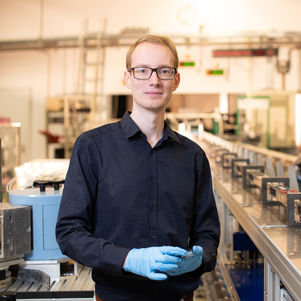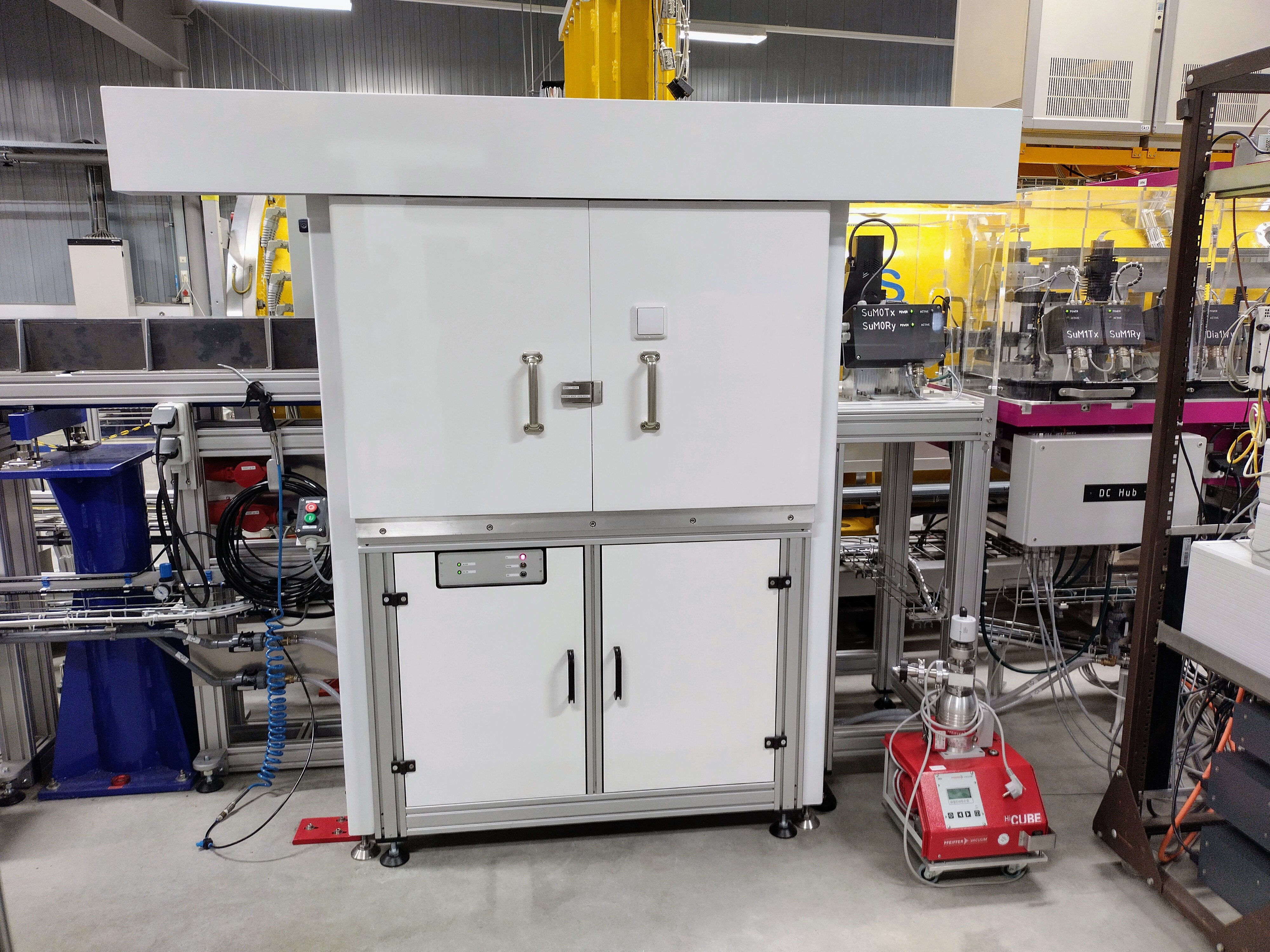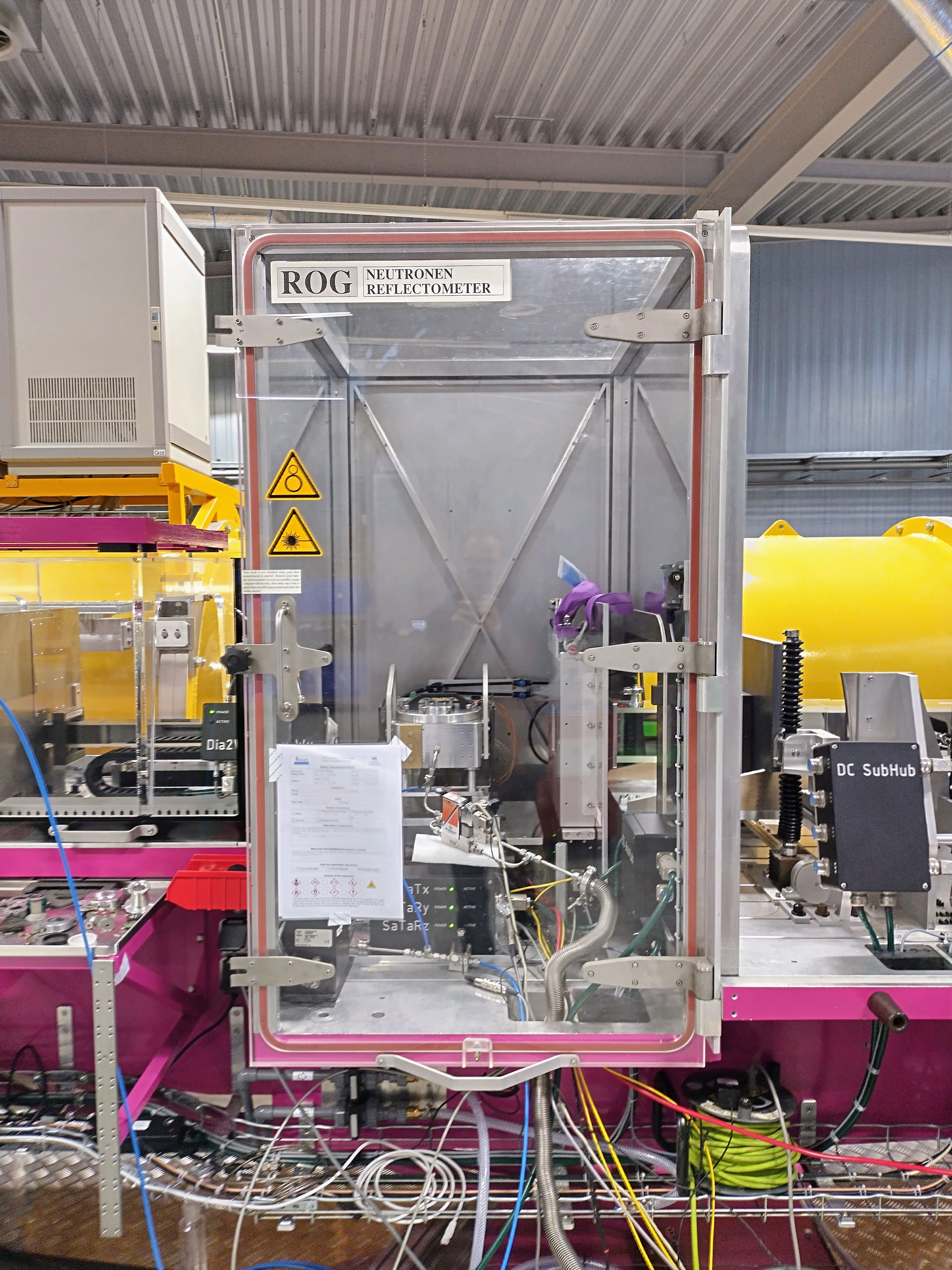Tiniest detail of materials revealed by renewed ROG Neutron Reflectometer
Today the ‘new’ ROG neutron reflectometer at the TU Delft Reactor Institute has officially been opened. The instrument shows the structure and composition of thin layers and interfaces of materials. The opening is an important step for scientists working on improving performance and sustainability for a wide range of products varying from battery lifetime of cars and phones, up to solar cells, proteins and dental implants. They will be able to study materials in even more detail.
The ROG neutron reflectometer is an 8 m long experimental set-up that measures the way neutrons are reflected by flat surfaces and interfaces with the aim to provide information about the thickness, composition and roughness of extremely thin films and other layered structures. It can be used to study one or more layers of materials with thicknesses of 5 - 150 nm while being able to resolve details down to 0.2 nm, i.e. about 1 millionth of the thickness of a human hair.
Applications of the reflectometer can be found in many science and engineering domains. For example, it can be used to study how interfaces degrade in battery materials when batteries are cycled with the aim to improve their lifetime and capacity. This would then result in longer range for electric cars with a longer range and an increased lifetime of such a battery. Other applications are the study of anti-bacterial coatings for dental implants to avoid infections during the placement of such implants, materials that can be used to detect the tiniest leakages of hydrogen and special layers that can improve the efficiency of solar cells such that one solar panel can produce more energy from the same amount of sunlight.
Cool Upgrade
As part of the Oyster project that aims to upgrade the possibilities for research with the Delft Research Reactor, the reflectometer has been upgraded, relocated and modified to operate in combination with a ‘cold’ neutron source that will be installed as part of this project. This ‘cold’ neutron source is effectively a very cold freezer for neutrons: it cools down the neutrons produced by uranium fission in the reactor to about -240 °C, which changes the energy and wavelength of the neutron such that the experimental set-ups perform better. To this new situation the reflectometer has to be adapted. A team of over ten engineers and scientists have taken the ‘old’ ROG neutron reflectometer as a starting point to construct an improved neutron reflectometer. Apart from the 7m main metallic frame, virtually every component has been redesigned and replaced and new innovations have been applied.
Calibration and testing completed successfully
During the past year, the team has successfully calibrated (‘commissioned’) and tested the neutron reflectometer. The hard work, innovative ideas and precise engineering of the team paid off: Even without the installation of the cold source, the intensity of the measurement signal increased by a factor of 6 and the background (‘number of neutrons detected that distort the measurement signal’) was reduced by a factor of 50 compared with the previous version of the reflectometer.
Performance improved by a factor 10
This allows researchers to measure much faster, much more samples, and most importantly, get higher quality data. During this testing phase, scientists from across the world that wanted to measure their samples travelled to Delft and gained unique insights in their materials, including scientists from Germany, the United Kingdom and Canada. With this extensive testing the project has been completed and the reflectometer is ready for the installation of the cold neutron source: Once the cold source is installed, the performance of the reflectometer will improve even more, likely by at least a factor of 10. After the shutdown for the installation of the cold source, scientists and industry from the Netherlands and abroad are welcome to use the upgraded reflectometer for the benefit of their research.
Do you want to measure at the TU Delft Reactor Institute?
Click here for more information on ROG Neutron Reflectometer.

dr. ir. L.J. Bannenberg (Lars)
- +31 (0)15 2789753
- l.j.bannenberg@tudelft.nl
-
Room: 2.01.220

